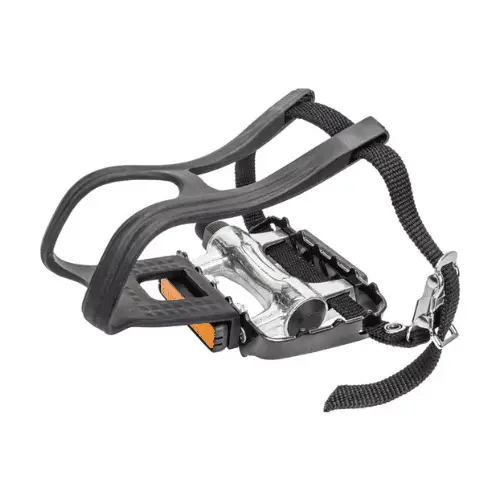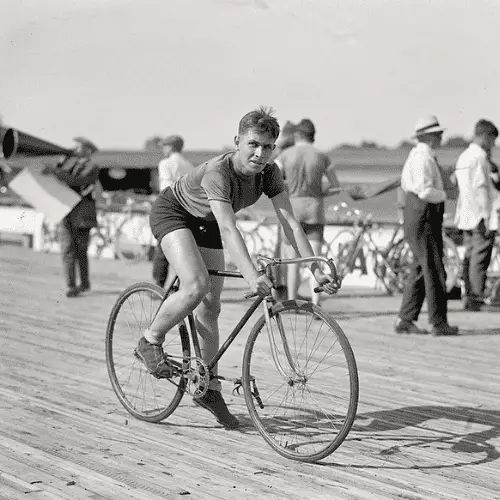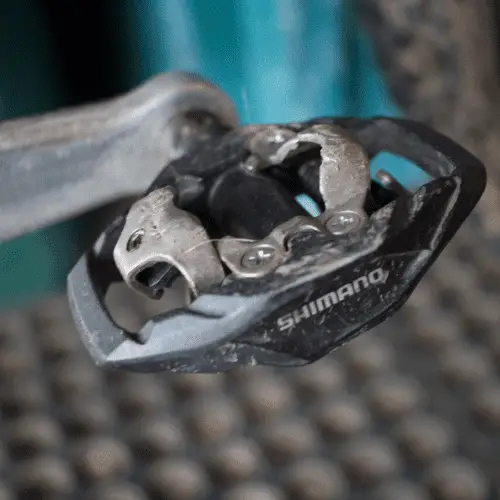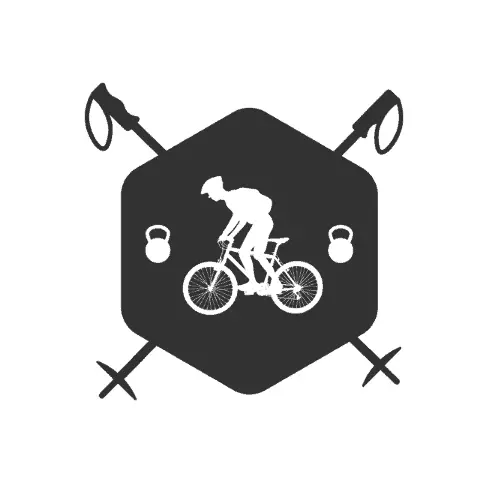When you’re getting into mountain biking, clipless pedals can be confusing.
The name indicates the lack of a clip. Yet riders still clip their shoes into the pedals?
So why are clipless pedals called clipless?
Clipless are pedals without a toe clip. The first iteration of clip pedals used toe clips to attach the rider’s foot to the pedal. When pedals developed further and began using a cleat retention system, the word clipless began to refer to the lack of a toe clip.
Ironic right?
To explain this in better detail, we first need to understand the history of clip pedals.
What Are Clip Pedals

Clip pedals are flat pedals with a toe cage attached to the front end of the pedal. You slide your toes into the cage. Then you cinch it tight with a strap that runs around the outside of the pedal and through the cage. The cage holds your foot in place and gives you the ability to both push down and pull up during the pedal stroke.
Just getting into mountain biking? Learn what to wear on your next ride.
Why Was the Clip Pedal invented?
When bicycles were developed, the first type of pedal was a flat pedal. The rider could only apply force in the downward portion of the pedal stroke. But in the early 20th century, competitive cyclists started looking for a new advantage.
Thus the clip pedal was born.
Clip pedals revolutionized biking because they increased the power output and efficiency. A cyclist could now push the pedal down and pull the pedal up.
Eventually, these pedals made their way onto mountain bikes.
Aside: I remember riding my Mom’s old full-rigid Cannondale with toe clip pedals.

Drawbacks to Clip Pedals
But there are some drawbacks to clip pedals.
Once the rider was on the bike with clip pedals, they had to reach down and tighten the strap. This is difficult to do on rough terrain. Also, this made it almost impossible for a rider to remove their feet from pedals during a crash.
The second drawback was that the strap used to tighten the toe cage could cut off circulation to your toes, which is very uncomfortable.
Lastly, since toe clips were only on one side, when the pedal was facing down, the toe cage could hook on obstacles in the trail, causing the rider to crash.
So obviously, there was room for improvement, which led to the clipless pedal.
What is a Clipless Pedal

A clipless pedal is a pedal that uses a cleat on the bottom of a shoe to attach to the pedal. Clipless pedals are called clipless because they do not have a toe clip.
Clipless pedals are similar to ski bindings. To attach to the pedal, the rider pushes down, locking the cleat into place. To detach, the rider twists their foot against the retention system.
There are numerous brands and types of clipless pedals. But there are two prevalent types of clipless pedals: SPD and Crankbrothers.
SPD (Shimano Pedal Dynamics) pedals are made by a variety of brands, including Shimano. SPD pedals have less play which means your foot moves around less when it’s attached to the pedals. With SPD pedals, you can adjust the angle the cleat will release from the pedal.
Crankbrothers pedals have more play between the cleat and the pedal. But you cannot adjust the release angle as precisely as you can with SPD pedals.
Benefits of Clipless Pedals
Just like clip pedals, clipless pedals improve the efficiency of a pedal stroke. They let you pull up on the pedal and push down.
Another benefit of clipless pedals is that it’s effortless to “clip-in” to the pedal compared to original clip pedals. All you have to do is press down with your foot onto the pedal, and the cleat snaps in place. This makes it easy to start and stop on rough terrain.
Compared to clip pedals, it is also easier to get your foot out of a clipless pedal. While it’s still not as easy as taking your foot off of a flat pedal, the process has improved dramatically. If you’re learning how to ride clipless pedals, you’ll still fall over for a while, sorry.
Lastly, and probably my favorite benefit. Clipless pedals hold you in place on rough terrain. The clip pedals hold your feet perfectly still when you ride over rocks and roots, inspiring confidence and making it easier to ride over rough terrain.
Summary
Mountain biking has come a long way since the first clip pedals. Today’s clipless pedals dramatically improve your efficiency while limiting the risk associated with being attached to the pedal.
If you have questions or want to discuss this article further, feel free to leave a comment.



Comments are closed.